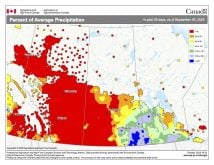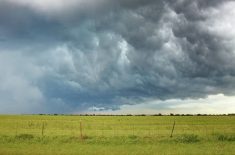With many crop insurance claims expected this year, AFSC has issued a release with tips to speed up the review and calculation of losses.
Some of the main topics include:
- Clients are encouraged to submit their Harvest Production Report as soon as possible after harvest. Clients may want to take an acceptable grain sample to a primary or terminal elevator for accurate weight, grade and dockage.
- If, after the HPR has been filed, it is found that crops are in a production shortfall, clients may want to take advantage of post-harvest advance options. These options allow eligible clients to receive a part of their estimated shortfall as an early payment prior to adjusters completing an on-farm production review. Clients do not have to take an advance on all crops and can choose to defer their advances to the following year.
- Included with insurance is the Variable Price Benefit, a price protection feature, which increases coverage when fall market prices are higher than the spring insurance price. It applies to most crops and compensates the client when they have a production shortfall below their insurance coverage and the price increases by at least 10 per cent, to a maximum of 50 per cent, during the growing season.
- If a client’s crop has suffered grade degradation due to designated peril, AFSC will adjust total production for quality loss on most insured crops. If quality is a concern on annual crops, AFSC only accepts the receipted grade on sales from buyers who have a primary elevator or terminal elevator licence from the Canadian Grain Commission.
- Abandoned acres. A client may decide to put the crop to use other than harvest, they may not be able to harvest, or, in some cases, they may choose to abandon the acres entirely. Clients declaring unharvested or abandoned acres on their Harvest Production Report must supply an estimated yield for those acres.
- Cushioning is a formula applied to a yield when a client’s production for the year is low. It minimizes the impact of abnormally low yields on the client’s individual normal yield.
Read Also

YEAR IN REVIEW: 2025 a year of weather extremes
Wildfires, drought and flash floods, oh my! Looking back at 2025’s headline-grabbing event in Canada and around the world.
For the purposes of calculating future coverage, the low yield will be replaced with 70 per cent of the individual normal yield for that crop in the year in question.
For most annual crops, due to improvements in varieties and management practices, yields generally increase over time. In order to ensure that individual coverage reflects this trend, individual yield records are adjusted by a trend factor.















